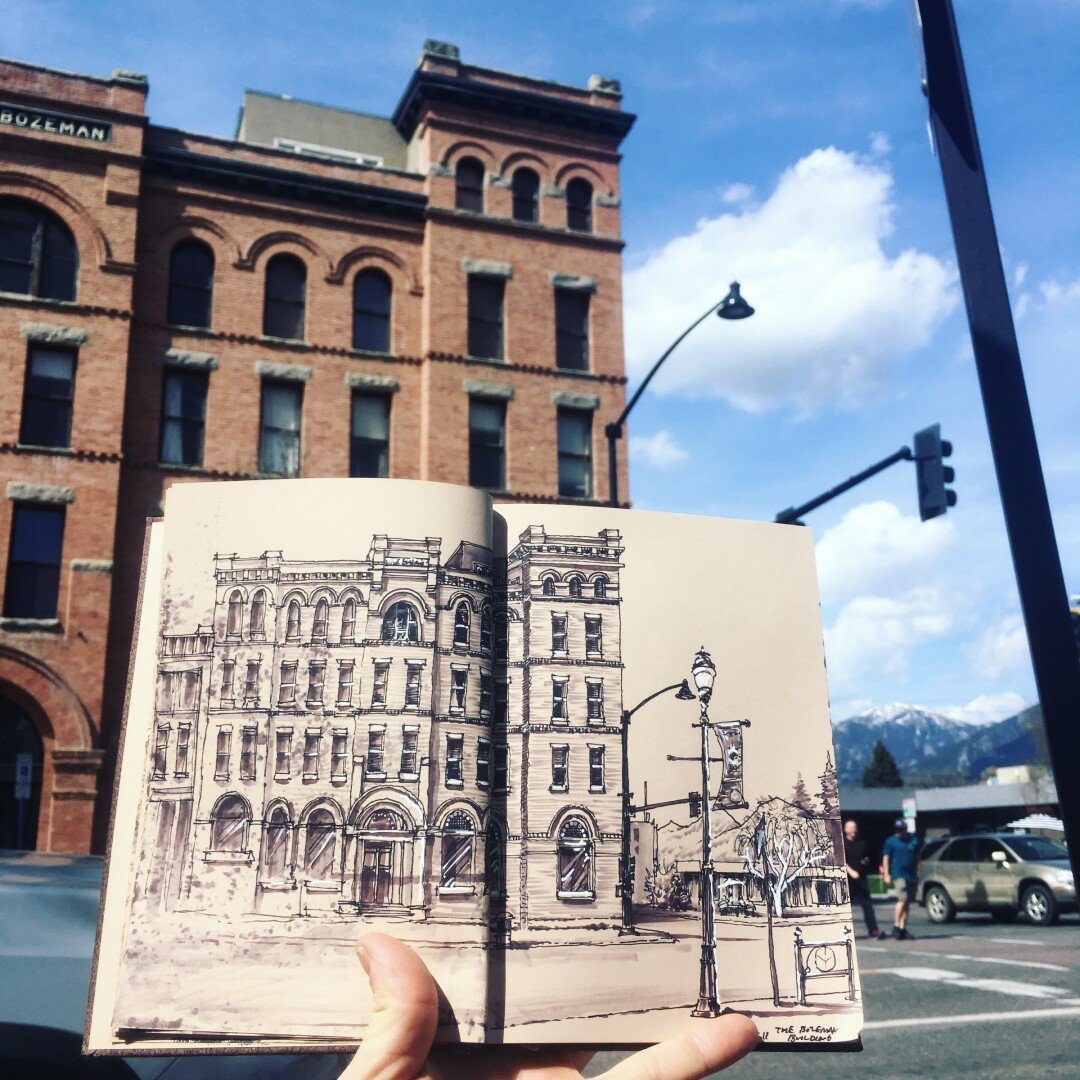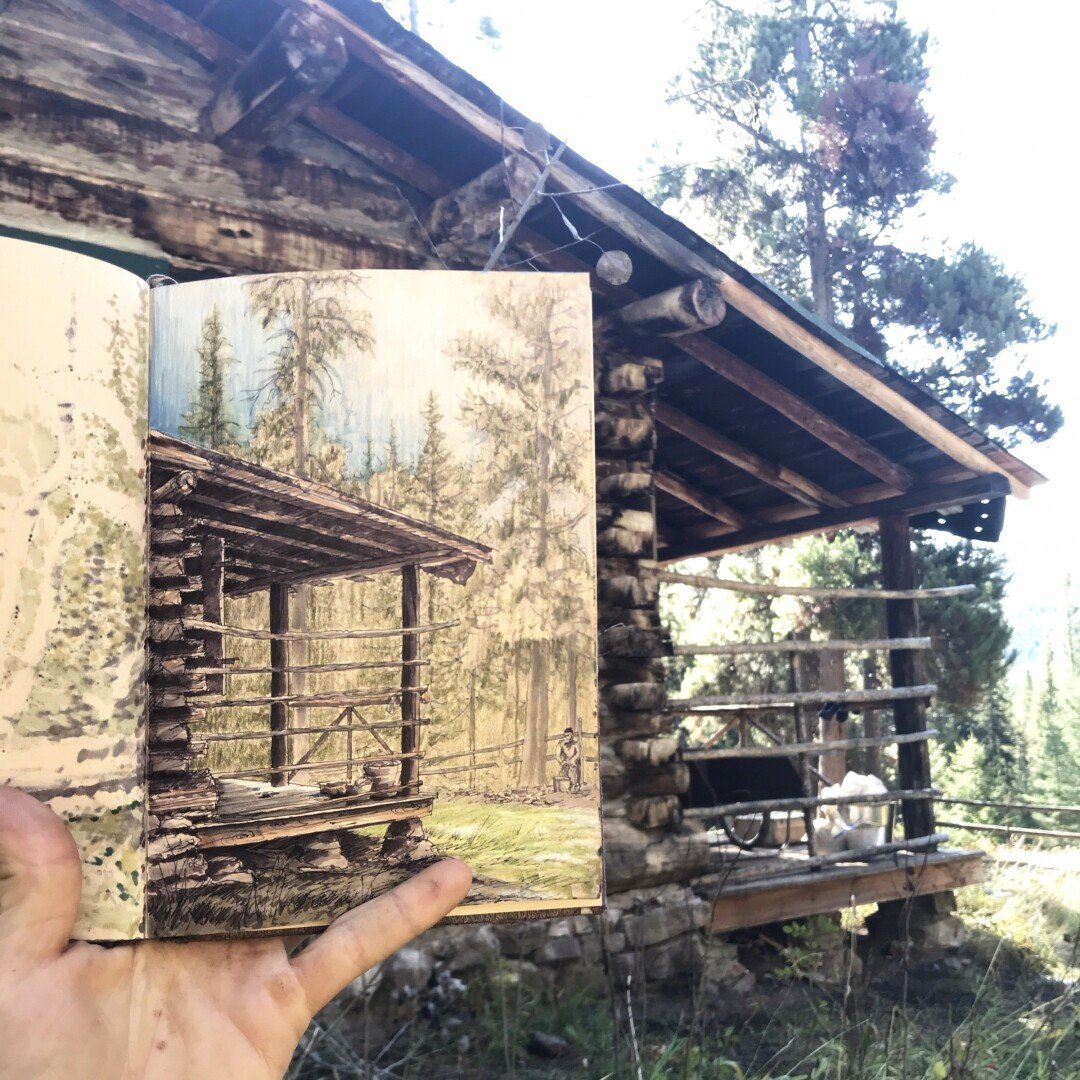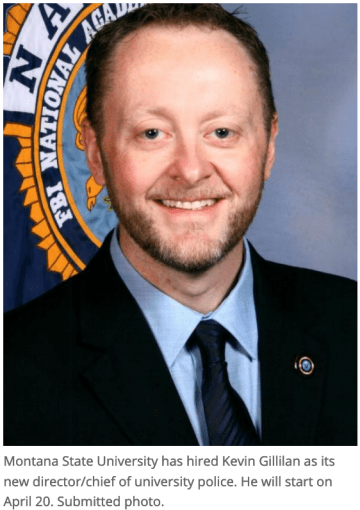
Public art and social creativity often define the cultural landscape of a town. It is uncomplicated if you think about it; the art in public places gets seen by everyone, from simple passersby to devoted park attendees.
And here in Bozeman, the public art scene is flourishing. Murals have been popping up left and right down our city streets, and dozens of statues dot our skylines.
Griffin Foster, a North Carolina migrant, makes a name for himself regularly as one of the pivotal players in this growing public art scene.
Foster got into murals as a way to pay for college. He said, “I realized that it was easier for me to get a mural than it was for me to sell a painting to a gallery if you have somewhat of a social vibe to you … That’s the thing about coming from a city, is that I’m not really shy”.
He grew up in Raleigh, which he says is worlds away from Bozeman. “Raleigh’s motto is ‘keep Raleigh boring,’” he shared.
But still, he learned art while growing up there. “I started drawing when I could hold a pencil. And then it was Legos, if I’m being honest. Legos were the quintessential kid item that facilitated my path” said Foster, adding that his first hustle involved selling blown-up drawing of Pokemon cards when he didn’t have the money for cookies at school lunch.
Growing up, Foster had plenty of role models to look towards. “I had a really hardcore AP Art History teacher in high school … and she was the one who definitely pushed anyone. If she saw that a kid had something, she would incentivize them to push on that. She was the one who ended up getting me to apply to the College of Design in Raleigh.”

He received a BLA in Landscape Architecture in 2016, and quickly found work that brought him to Bozeman, where most of his success has been in public art. He says his proudest work is a mural on Neptune’s Brewery in Livingston, though he also helped to paint the Bozeman letters that can be seen on the east end of Main Street.
“I helped Angela Yonke do the letters down there, the Bozeman letters,” he said. “That wasn’t really my project but she was like ‘Yo, we need somebody to paint letters’ and I was like ‘I got you.’”
He also, along with a friend, painted “most” of the walls by the Gallatin Valley BMX track on 7th Avenue, and just finished up a project on a hair salon in Hamilton.
He took a leap in coming here, saying, “I had no idea what the Hell I was doing, I didn’t know anything about this place, I had never even heard of Bozeman. I just kinda wanted to change it up. I’m used to a way more urban environment,” but still he must insist, “I’m a mountain guy.”
And of course, he allows the Bozeman landscapes and culture to influence his art. He said, “I’m always thinking about how your environment shapes your thoughts and your thoughts shape what you’re going to create.” Since coming to Bozeman, Foster has found his place in depicting the world around him.
In fact, the outdoor scenes he explores in Montana often serve as inspiration for his work. “I always bring my sketchbook and watercolor set backpacking. Most people go because they love being outside, but I go because I’m trying to capture and remember. When I do a sketch and look back at it, I can remember what I was wearing and where I’ve been.”
And here in Montana, he’s found plenty of spots to stop and sketch.“That’s why I love Montana ... I’m curious about the spots. Montana reminds me of a big treasure map. I feel like I know more rivers and mountains in Montana than I do in my home state,” said Foster.
While the outdoors makes a happy home for Foster, the social landscape requires, in his eyes, a bit more tedious navigation. Foster noted the duality of our local art scene saying, “One, [there’s] really talented and mature fine art, which I’m kind of into with like plein air painting,” which is a form of painting that involves creating your work where it will be shown. “But, there’s also a community of younger people, like people my age … but I don’t really put myself in that category either.”
So where does he fit in, stylistically? “I put my work in the lens of art movements, not in locations. Like Italian Futurism and Spanish Cubism. But mostly Italian Futurism. That’s why I’m broke right now. I’ve been to Italy like seven times,” he said. He also cites a style known as Graf-Futurism as one of his regular mechanisms, which is essentially a combination of Graffiti and Italian Futurism.
This kind of work comes with a certain sort of rhythm, a city-type beat that is prevalent in Bozeman despite our distance from any urban areas. “There’s a lot of back and forth between internal navigation and external stimulation; there’s that feedback loop,” he added.
And, the strive to exist in a movement that goes with little recognition keeps Foster hungry. “I’m never satisfied, and I think that that’s one of the first things you have to have. That looming desire to make the next thing,” he said.

Truly, Foster values the ability to do hard work, which is reflected in his expansive repertoire. “I don’t go home and watch Netflix. I go home and I work on my personal projects for as many hours as I can get before I go to sleep, and then I hate sleeping,” he said, with a bright smile and tired eyes that say it all.
But, he does not look down on those who live without the same passions that he has. He said, “It’s not my job to come into here and tell people how to live their life. One Montanan that I met that I really appreciated, he said ‘I don’t mind outsiders moving here, but I do mind outsiders moving here trying to change how Montanans are living.’ And that I completely respect.”
Looking ahead to the dawning decade, Foster still feels that he has a lot of work to do for our community. “I’m planning the BYEP wall. It’s gonna be fire, dude. It’s gonna be legit,” he said, in reference to a mural he has been contracted to paint on the side of the new building used by the Big Sky Youth Empowerment Program on Mendenhall. “I consider myself a Graffutruist, someone who’s interested in letters but also Futurism and like, planar geometry, and abstraction. But I wanna start a new art movement called Forest Futurism. It’s a spin off a Graffuturism. I’m gonna do the first piece on BYEP, but what I’ve realized is that the amount of urban infill and Bozeman right now, and the verticality, I think it’s the right move, but I feel like we’re falling short with maintaining a good green footprint,”
“None of the buildings have green roofs, they’re taking trees up and putting in street trees in grates that are four feet by four feet, these trees are going to die within the year.So, what I want to do is basically an insane forest, like an abstract forest on the side of BYEP that’s basically a statement about healthy growth, like green growth,” he said.
With all these big ideas, Foster hopes that his work will keep moving our community forward. He’s also doing work with the Ravalli County fairgrounds this year, though his success has meant he gets to be more choosy. “I’m very particular, at this point, with what I pursue. In college, I didn’t have a job so I was more down to do whatever, but now I’m kind of locked down by time and I can only take so much other work,” he said.
As public art continues to grow in Bozeman, Foster has one message for us all. “Simplify your life. The less bills you have, the easier it all is.” This message is apparent in his art, which lucky for us, is widely publicly available, and will continue to become more accessible as the public art scene flourishes.







News Comments
Thank you
Open Auditions for Annie
Monday, Sep. 16, 2024
I’m at the Bozeman airport where your painting, “Blowing East” is displayed. It’s absolutely gorgeous! Bravo, Marci!!
The Artists’ Gallery in Bozeman’s Emerson Cultural Center May Exhibits
Sunday, Jun. 30, 2024
This is so typical of a sign in, which we should not have to do to check if we or some one in our party got a permit. I have been working or "creating an account" for 30 minutes and just get the same ...
Smith River permit drawing results available
Sunday, Mar. 10, 2024
I have struggled with this podcast and my own participation therein, the event itself obviously traumatic, but beyond that my inability to reach anyone and convey anything resembling truth. The person ...
Billings, MT Case Becomes True Crime Podcast | 'An Absurd Result'
Marktokarski
Saturday, Jan. 20, 2024